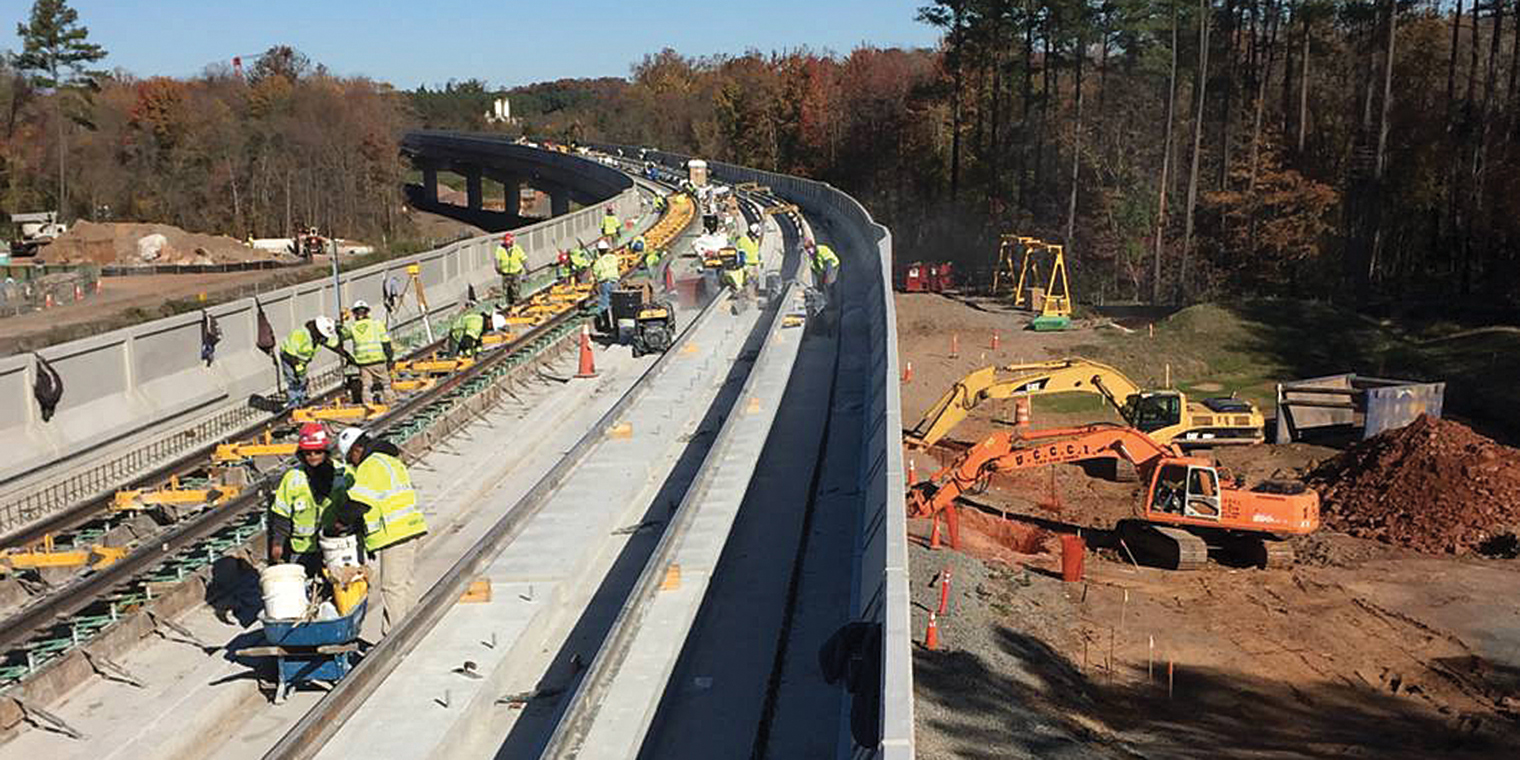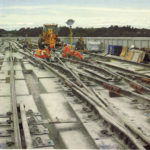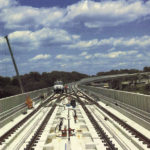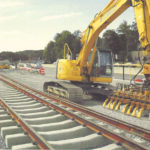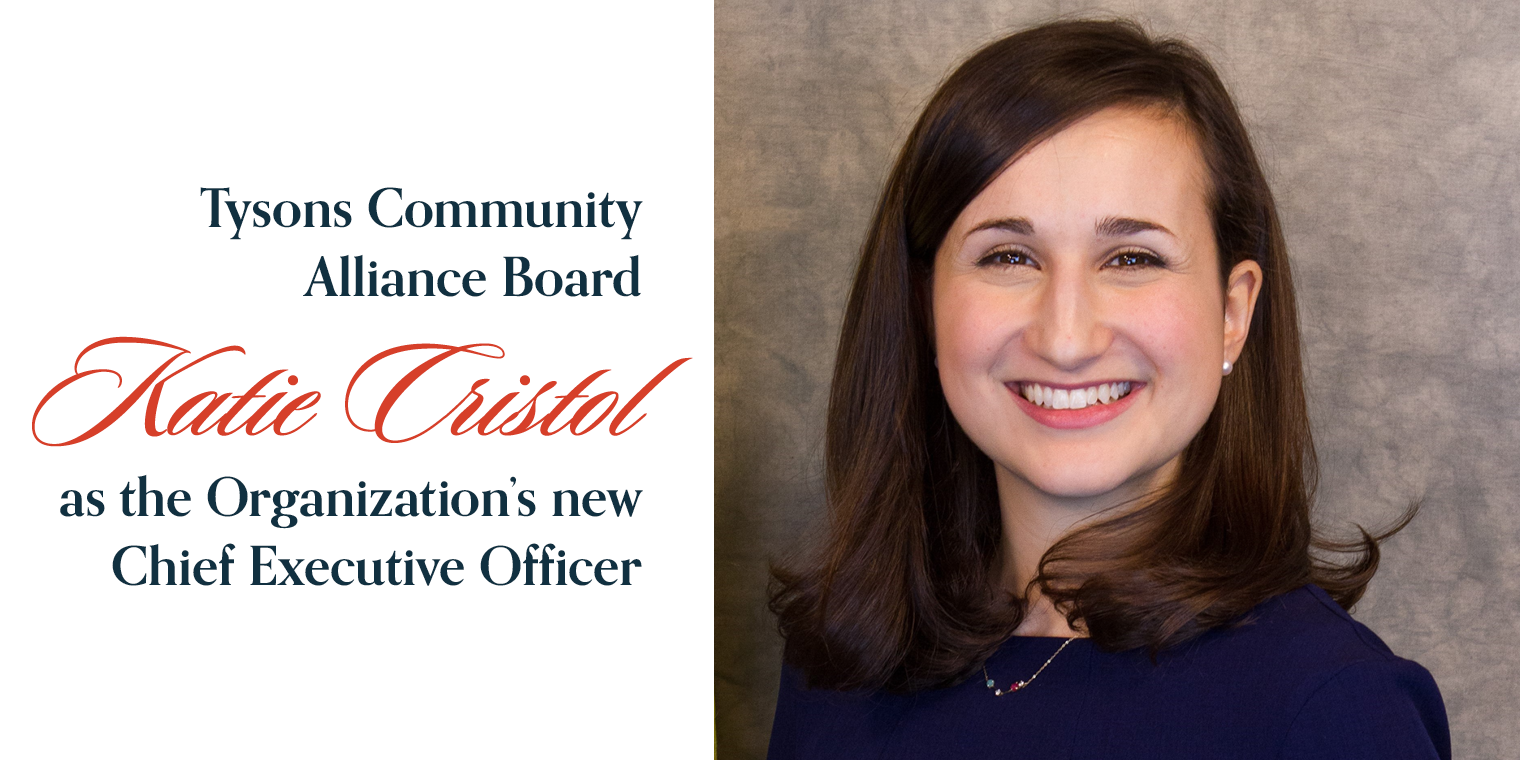Dulles Corridor Metrorail Project crews recently marked a big day for Phase 2 of Metro’s Silver Line when they began installing track along sections of the Phase 2 alignment.
“Beginning the at-grade track work is a very important milestone,” said Director of Project Engineering Stephen Barna. “It signifies the completion of all below-grade utility work and trackway walls required to place ballast stone, ties and rails. It is an exciting time for the project.”
Two kinds of track are needed for the project: one type for the at-grade sections and another for the aerial guideway through Dulles International Airport.
Approximately 8 miles of ballasted track will be used to complete the at-grade (ground level) sections, while direct fixation track will be used for the remaining 3.5 miles of aerial track, said Nikolas Hunter, the track project manager with Capital Rail Constructors, the contractor MWAA tasked with building the rail line. Dulles Airport Station is the only Phase 2 station along the aerial guideway; Reston Town Center, Herndon, Innovation Center, Loudoun Gateway and Ashburn are all ground level stations accessed by pedestrian walkways to be constructed over the Dulles Toll Road, Dulles International Airport Access Highway and Dulles Greenway.
Nearly 1,400 workers support the project which extends the Silver Line from the Wiehle-Reston East Station westward through Dulles International Airport and on to Ashburn.
All electrical power, train control and communication duct banks, as well as track storm drain pipes and structures, must be installed prior to track construction.
- Phase 1 workers assemble direct fixation track and switch construction on Route 7 aerial guideway west of the Springhill Station. (Photo courtesy of Stephen Barna/Dulles Corridor Metrorail Project)
- Phase 1 construction of direct fixation track on Chainbridge Road along the aerial guideway east of the McLean Station. (Photo courtesy of Stephen Barna/Dulles Corridor Metrorail Project)
According to Hunter, fifty workers will be constructing the ballasted tracks, a quicker process than direct fixation track installation.
To construct ballasted track, workers first must bring the track road bed to the correct elevation before placing and compacting finely crushed stone along the at-grade sections of the alignment to create the sub-ballast, Barna explained. Then, a 12-inch layer of larger crushed stone is placed to create the ballast to support the precast concrete ties that are set in place next. Sections of rail are then fastened to the concrete ties with steel plates and rail clips. Then, a specialized machine places additional crushed rock between the ties and corrects the final alignment and grade.
Thirty workers are installing the direct fixation track along Auto Pilot Drive at the Airport, Hunter said. That process requires the use of concrete plinths, which are cast-in-place concrete structures that support the rail. Ninety-foot sections of rail are delivered by truck and then welded together into ‘sticks’ of nearly 1,000-foot lengths and fastened to the concrete plinths with steel plates and bolts, Barna said. The final line and grade work for direct fixation track is done by hand.
“Our whole purpose is to build a transit railroad for the public’s use,” Barna said. “After nearly four years of very difficult design and construction work we are beginning the challenging phase of installing the track and all of the systems that will allow us to begin testing with rail cars in 2018.”
The Metropolitan Washington Airports Authority, the entity tasked with managing the project, will turn it over to the Washington Metropolitan Area Transit Authority upon completion, which will operate it as part of Washington’s regional rail system.

